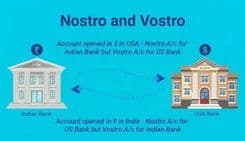Remittance
What Does Input Tax Under GST for Exports Mean?
As business people, we all know that while returns can be good for a successful enterprise, risk is always involved. The risk factor amplifies when the business involves business across borders, like exports. There’s a higher level of competition, increased risks in transportation, and the chance of non-payment due to various factors.
On the positive side, exports offer a bigger market, chances of better profits, and, most importantly, an opportunity to receive payments in foreign currency. The government of India is aware of the benefits of an export-rich economy and the efforts required by exporters to meet the challenges. The host of benefits and schemes include trade finance solutions, working capital loans, insurance, and more.
There are also schemes for GST relief on export transactions. This article will look at the input tax credit scheme for exporters.
What is the Input Tax Credit for exports?
The short version of Input Tax Credit is the refund of taxes exporters can claim when they produce goods and services for export. This scheme ensures exports are priced competitively in the international market.
A deeper dive into this will require a case study. Let’s take the example of a garment exporter. To stay competitive in the global market, exporters must ensure quality products without compromising quality.
The first step in ensuring quality is to study what is required to ensure quality and pricing. Then sourcing and purchasing the right machinery and raw materials. Once the inputs required are all lined up, it’s time to design according to the purchaser’s needs and start production.
During production, there would be inputs like electricity charges, water for washing garments, dying equipment, and fuel charges for transportation and generator usage. All these steps will happen quickly, and most have a GST or tax component.
Input Tax Credit is the credit for GST paid on the following:
- Components and raw materials (in the garment export example, this will include thread, cloth, buttons, zippers, etc) in the production process
- Service availed (in the garment export example, it will be the designing and consulting services availed)
- Capital goods (in the garment export example, this will include the special machinery for cutting the cloth, the buttonhole machine, sewing equipment, and other machinery for garment production)
Exporters can leverage Input Tax Credit ( ITC) to claim a refund on GST or offset the GST liability when services or goods are exported.
What are the options for a GST refund on exports?
You have two options to avail yourself of this facility. You can
Export under Letter of Undertaking or Bond without paying GST
- Exports are considered zero-rated supplies, which incur 0% GST
- GST is not charged on invoices
- Exporters can also seek a complete refund of ITC that is accumulated on inputs by submitting a Letter of Undertaking online via the GST portal or filing a GST refund application (RFD-01)
This option is preferred by exporters who do not want to block their working capital.
Export after paying GST and claiming a refund
- The exporter charges GST as applicable on export invoices
- The GST collected this way is paid to the government
- The exporter claims a tax refund on the amount paid through RFD-01
This scheme suits exporters who prefer quicker refunds, leveraging the automatic process.
What is the process for claiming the ITC refund on exports?
While we have touched upon the process for claiming ITC refunds in the above section, we would like to detail the process below.
- Use GSTR-1 to file and report export invoices
- Use GSTR-3B to file and declare ITC and tax payments
- Submit the refund application using the form (RFD-01A) on the GST portal online
- The GST department will process the claim by verifying and approving the details
- The refund will be received when it is credited to the bank account
Exporters should be aware the time limit for filing refund claims is within two years from the date of the export transaction.
Are there any special ITC rules for deemed exports and SEZs?
Yes, supplies to SEZ units are zero-rated, and ITC can be claimed for these. Refunds are also available for deemed exports (advance authorization, EPCG, etc.).'
Are there any tips to deal with common refund issues?
Yes, there are some simple tips to ensure you do not face issues with ITC refunds.
- Maintain immaculate records of your invoices and entries to ensure there are no issues in the process
- Make sure to check if your forms, like GSTR-1 and GSTR-3B consistently match the returns you are filing
- Track the expiry date of the Letter of Undertaking and renew it before the expiry date
- Keep following up with GST authorities and track your application status to avoid delays in refunds
Are you struggling to store, manage, retrieve, and share documents related to exports? At LeRemitt, we have the solution for you; our document management platform will enable you to streamline the process with secure storage, managed access, and easy sharing. Want to learn more? Click here to connect with our team!


